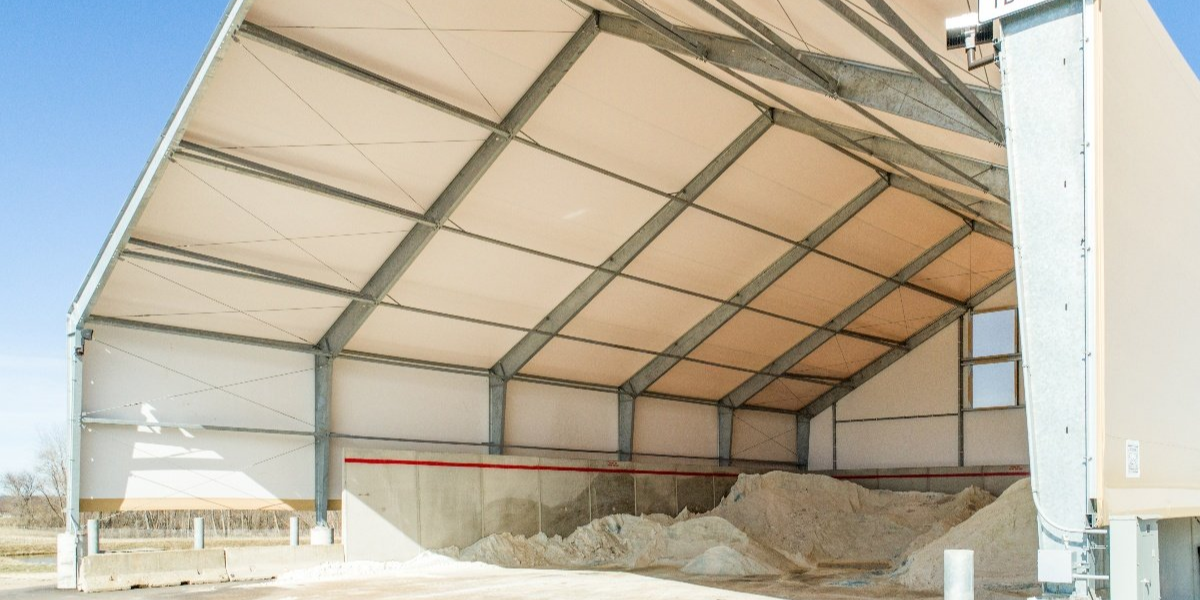Fabric Buildings vs Post-Frame Buildings

When planning a new construction project, one of the first decisions is choosing the right building material. Fabric buildings and post-frame buildings have unique benefits. Knowing their differences can help you choose the best option for your needs.
Fabric buildings are made to provide great flexibility. They let in plenty of natural light and reduce maintenance costs. They also offer the durability and customization options you need. Let’s dive into a detailed comparison to see why fabric buildings might be the superior choice for your next project.
But these advantages don't exist in a vacuum - comparing building types directly is one way to see how a fabric building might be the best choice for you. Let's start by seeing how fabric buildings compare to post-frame structures.
Sustainability: Fabric Buildings Lead the Way
Post-frame buildings use wooden frames, which require the harvesting and processing of large trees. This process often leads to waste and has a more significant environmental impact.
Fabric buildings, on the other hand, are inherently more sustainable. Their fabric can allow natural sunlight to flood the interior, reducing the need for daytime electric lighting. Many fabric structures are designed for off-grid applications, making them an eco-friendly choice.
Want to see sustainable design in action? Check out the Solar Ship case study, where fabric buildings excelled in off-grid use.
Natural Light: A Game Changer
If maximizing natural light is a priority, fabric buildings are unparalleled. Legacy Building Solution's white ExxoTec™ fabric allows for 12% translucency, which provides uniform, diffused light throughout the interior.
Fabric buildings can create a bright and welcoming space. In contrast, post-frame buildings rely on windows or skylights to illuminate specific areas. The enhanced natural lighting reduces energy costs and improves the overall comfort and productivity of the building's occupants.
Flexibility: Built to Adapt
Fabric buildings stand out for their incredible design flexibility. With fewer interior support columns, you gain access to wide, open floor plans that can accommodate any layout. Whether you need a space for equipment storage, athletic facilities, or large-scale manufacturing, fabric buildings can be customized to meet your needs.
They also offer versatility in foundation types, allowing construction on pre-existing concrete pads, gravel bases, or other surfaces. Additionally, features like varying column heights, insulation, overhangs, sprinkler systems, and lean-tos can be added for greater functionality.
Low-Maintenance Durability
Post-frame buildings constructed with wood are susceptible to insects, rodents, and mold. Over time, these factors can lead to costly repairs.
Fabric buildings, built with steel frames, eliminate those risks. Steel is impervious to pests and mold, and fabric covers don’t require painting, siding, or shingles. By choosing a low-maintenance fabric structure, you save both time and money over the building’s lifespan.
Portability: Ready for the Future
While fabric buildings are designed as permanent structures, their modular design allows for easy relocation if your needs change. This level of portability is hard to achieve with post-frame buildings. This gives fabric structures an advantage for businesses that expect to grow or move.
Discover the Advantages of Fabric Buildings
Fabric buildings offer great flexibility, plenty of natural light, and long-lasting durability. They are a smart choice for today’s construction needs. If you are planning a commercial, agricultural, or industrial project, fabric buildings are a great option. They are sustainable and can be customized to fit your needs.
Ready to explore your options? Contact us today to learn how fabric buildings can bring your vision to life.
Subscribe to our Blog
Recent Posts
- 5 Factors Every Project Owner Should Consider Before Approving Building Materials
- The 20-Year View: How Material Choices Impact Long-Term Operational Costs
- Climate Resilience in Commercial Construction: Why Traditional Methods May Not Be Enough
- Speed and Quality: The Role of Hybrid Building Materials
- Beyond the Bleachers: Designing Visually Striking Sports Facilities
